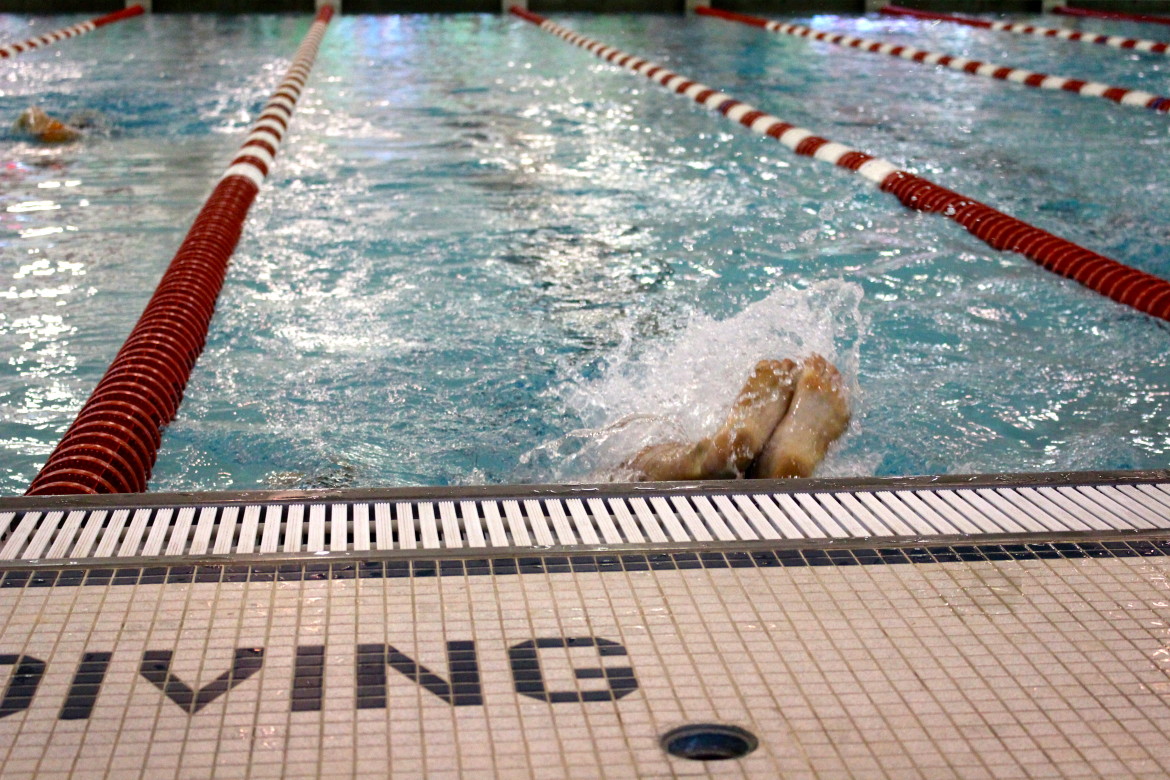During Thursday’s BOE meeting GHS Health and PE teachers Kathy Steiner and Chrys Hernandez urged the board to support keeping the 9th grade Aquatics and Water Safety course mandatory. After 45 years, the one quarter course was recently made optional.
Steiner said about 830 children drown in the US annually, and in diverse communities, minorities are three times more likely to drown than their non-minority peers.
“We often take for granted that everyone knows how to swim and survive in the water,” Steiner said. “However, this is a false notion. The reality is not everyone has the resources to learn.”

“As a shoreline community, we have a responsibility to teach all of our students the basics of swimming, how to be safe in and around the water, and what to do in case of a water emergency,” she added.
Steiner said the course “closes the achievement gap” by providing basic swimming and life saving water skills to all students regardless of academic ability.
BOE member Laura Kostin said her own children had dreaded the GHS aquatics class and wondered if there had been consideration of a testing out option for children who didn’t need the instruction.
Schools superintendent Dr. Toni Jones said the course was not being eliminated entirely.
“It’s still available, but it’s a choice for students and families. I will be honest. I really think 9th grade is really too late to introduce students to swimming.”
She said the YMCA had a swim program aimed at second-graders, and that a PE teacher familiar with the program had said about 90% of 9th graders already know how to swim.
“It’s really that 10% we want to target,” she said, adding that she’d like to see an expansion of offerings to include courses like water aerobics or lap swimming for students who want to develop lifetime fitness. “I think there is a lot of support for the approach that we’re taking.”
She said many students find the coed class uncomfortable, but it is not option to offer the course by gender.
“No, we really could not. It would be an Office of Civil Rights situation. We don’t do that any more. There have been several court cases,” she said.
Jones said she would support the option of testing out, but that it would involve taking a busload of middle school students over to swim across the pool.
“My goal is really to offer swimming early in their lives, so that our youngest students know how to swim,” Jones said.
Kathleen Stowe said she supported the class not being mandatory.
Karen Hirsh also supported making the class optional. “It’s not a state requirement. It just happens to be that we have a pool.”
BOE chair Joe Kelly said the value of the course was in teaching children in a coastal community how to react to dangerous situations around the water.
He said he’d heard from coach Steve Lapham that his former student reported anchoring their boat to go swimming with friends in Long Island Sound. The boat lost its anchor and drifted away, and the current was too strong to catch up with the boat.
“The former GHS student expressed to Steve Lapham that it was because of the training he received in the course that he was able to calm the other kids down and two hours later they were rescued, and thanked Steve.”
Mr. Kelly said he’d like to hear from the PE teachers who had taught the swimming class to generations of students. “At least let’s bring the discussion to those who have boots on the ground for this.”
Cody Kittle noted that at GHS there was no driver’s education requirement.
“Driving is much more dangerous than swimming for teenagers, at least in terms of fatalities,” Kittle said. “The idea of forcing people on the swim team to take a swim class seems insane to me.”
Mr. Kelly said further discussion would be necessary.
